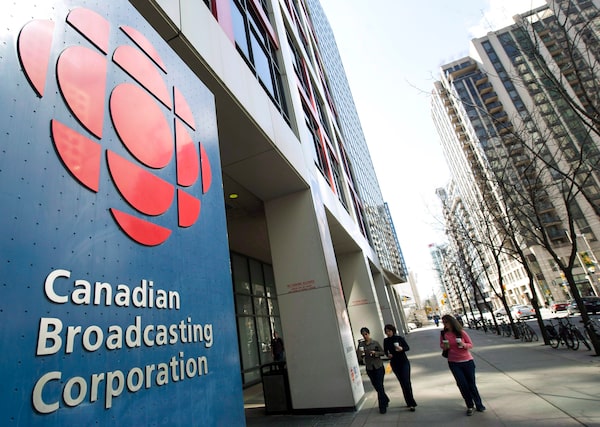
CBC says it's dropping the four-host format of The National and will no longer have five one-hour rolling broadcasts, citing negative audience feedback. THE CANADIAN PRESS/Nathan DenetteNathan Denette/The Canadian Press
The CBC is scrapping the four-anchor format for its flagship newscast, The National, bringing to an end more than two years of tumult, experimentation and negative audience feedback following the retirement of its long-time anchor, Peter Mansbridge, in the summer of 2017.
While all four anchors will remain involved with The National, Adrienne Arsenault and Andrew Chang are now the program’s official co-hosts, charged with anchoring broadcasts Monday through Thursday from Toronto. Ian Hanomansing, who returned to Vancouver after relocating to Toronto at the launch of the overhauled program in November, 2017, will host the Friday and Sunday broadcasts.
Rosemary Barton, based in Ottawa, will become the chief political correspondent of CBC News, contributing to “digital, podcasts, radio, and television political specials,” according to a memo sent to CBC staff Wednesday afternoon. She will also continue to moderate The National’s weekly At Issue panel discussion.
All three hosts will continue to report from the field when not tied to the anchor desk.
The National is also ending another major innovation it introduced with the program’s revamp, when it expanded from two one-hour broadcasts – which aired live on the main CBC TV network in the Atlantic Time Zone and then the Eastern Time Zone – to five one-hour broadcasts rolling west across the country, which was made possible by having an anchor based in Vancouver.
It will revert to two live broadcasts a night, although structural changes it made to its news systems for the program’s overhaul will allow it to more easily update audiences, should news break after the program signs off at 11 p.m. (ET). “It’s important to note we will maintain the nimbleness and technical ability to respond quickly to breaking news for our Western editions,” CBC spokesman Chuck Thompson said in an e-mail.
When CBC executives unveiled the four-anchor format in the summer of 2017, they acknowledged the model was unorthodox. But they hoped it would allow each of the hosts to continue reporting from the field – on any given night, there were usually only one or two anchors in studio – while also bringing their individual strengths to the program: the veteran foreign correspondent, Ms. Arsenault; the Ottawa whisperer Ms. Barton; Mr. Hanomansing, a classic anchor in the Mansbridge mould, unflappable during breaking news; and the relatively inexperienced, but audience-friendly Mr. Chang.
In an interview with The Globe and Mail last summer, CBC executives acknowledged the show was still a work-in-progress, including their plan to deploy the hosts for reporting assignments. “We imagined it happening with much more frequency than we’ve been able to organize," said Jennifer McGuire, the general manager and editor-in-chief of CBC News.
In a memo to staff outlining the changes on Wednesday, Chad Paulin, the executive producer of The National, wrote: “Television news viewership is driven by consistency, both in format and in presentation. Our audience told us they want to know what they can expect night to night: who will bring them the news and how it will be delivered. We listened. This season we have slowly introduced measures that lead to a more consistent program – including tweaks to our format and sharpened hosting roles.”
Ratings for The National on CBC TV and CBC News Network rose 3.6 per cent year over year, from an average audience of 667,000 in January, 2019, to 691,000 in January, 2020, according to figures provided by the CBC.
In 2016-17, the final season of Mr. Mansbridge’s tenure, the show averaged about 866,000 viewers a night.
 Simon Houpt
Simon Houpt